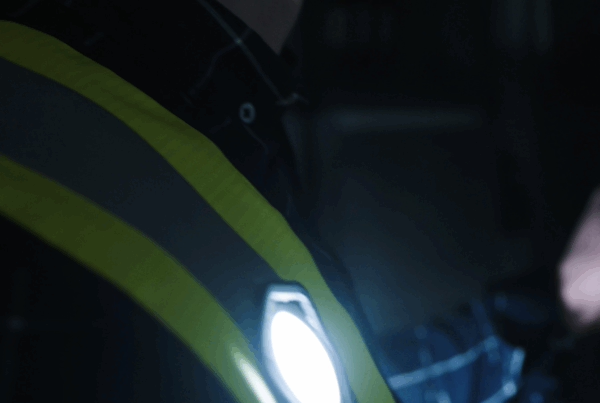How Military Wearables are revolutionising soldier technology
Soldier technology has come a long way from basic gear and communication radios. In today’s defence landscape, wearable technology is becoming an essential tool for improving soldier safety, decision-making, and performance on the battlefield. At Elitac Wearables, we’ve seen first-hand how custom-built military wearables can solve real operational challenges — particularly through our work with the Dutch Ministry of Defence.
The role of wearables in modern military operations
Wearable technology is no longer confined to consumer fitness trackers. In military contexts, wearables offer a new layer of intelligence and functionality. From live feedback on a soldier’s physical condition to discreet navigation support, the potential is growing rapidly.
More importantly, wearables don’t replace existing systems — they enhance them. The right wearable can reduce cognitive load, improve coordination, and help soldiers stay focused in high-pressure environments.
Key capabilities of Military Wearables
When developed for real-world missions, military-grade wearables can support:
- Live physiological monitoring: Track stress, fatigue, and vitals in real time.
- Discreet navigation and orientation aids: Crucial when visual or auditory instructions aren’t practical.
- Improved situational awareness: Through haptic cues or sensor feedback, without adding extra screens or buttons.
- Better communication and coordination: Allowing smoother integration into command structures.
But all of this hinges on getting the design right.
Built for the battlefield: What makes a wearable “military-ready”?
Developing a wearable that works in a lab is one thing. Making sure it performs under the physical and environmental demands of military missions is something else entirely.
Here’s what our team focuses on:
- Durability: Devices must withstand shock, water, temperature swings, and wear-and-tear.
- Ergonomics & Ease of use: Comfort matters, especially when gear is worn for 10+ hours at a stretch.
- Low profile: Soldiers can’t afford to be weighed down or visually compromised.
- Battery life: Technology is only useful if it lasts the entire mission.
- Implementation: Making sure the innovation fits in with existing logistics, processes and components (like batteries), already available in the camps.
These aren’t generic wearables with a military label — they are solutions co-developed with soldiers, for soldiers.
Case study: Flight Sense System (FSS)
Developed with Dutch Defence pilots and the Center for Man and Aviation (CML), the Flight Sense System is a perfect example of wearable design that solves a very specific problem.
Fighter pilots on a mission, fly in extreme circumstances. Stress, heat, light-speed, in pursuit, etc. It often occurs they feel unwell, but the real cause is hard to explain. This is where medical level vital sign monitoring comes in.
The Flight Sense System is a medical grade wearable, specifically designed to measure core vital signs, such as electrocardiogram (ECG), heart rate (HR), heart rate variability (HRV / stress), respiration and acceleration (activity). Plus, it is designed to be used inside the aircrafts during flight, unlike many other (commercial) products. It can store 10+ days of raw (unfiltered) data locally and securely.
This allows the medical staff to research what is actually happening with the pilot during flight, and can help with new preparations and training to overcome these worrying situations.
Case study: Mission Navigation Belt (MNB)
Another collaboration with the Dutch Ministry of Defence, the Mission Navigation Belt gives soldiers a new and intuitive way to navigate without looking at a screen. The belt is connected ti the soldier system and uses haptic feedback to guide them through unfamiliar or hostile environments — freeing their hands, eyes, and ears for other tasks.
Specifically designed to be worn in combination with different combinations of the soldier equipment, the belt integrates easily into mission load-outs and supports discrete missions, even in total darkness.
It works on foot, and with vehicles, specifically tested with motorcycles and boats. It’s not just more efficient — it’s safer.
What’s next in Soldier Wearables?
Wearables for soldiers are only getting smarter. In the coming years, we expect to see:
- AI-assisted health monitoring to catch signs of fatigue or injury before they become critical.
- Integration with digital twin training systems for continuous performance feedback.
- Smart textiles that can sense environmental threats or adjust insulation levels dynamically.
- On-device decision support that operates even without a network connection.
The common thread? Real-time, meaningful data — presented in ways that support rather than distract.
Why partner with Elitac Wearables?
At Elitac Wearables, we don’t build gadgets. We build solutions that start with the end-user — whether that’s a pilot flying nap-of-the-earth, or a foot soldier navigating urban terrain.
Our work is grounded in user testing, scientific research, and real-world deployment. And because we handle everything from concept to manufacturing, we ensure every wearable meets the standards required in the field.
Whether you’re a defence contractor, innovation officer, or government agency, we can help turn your wearable tech ideas into reality.
Interested in building the next generation of soldier technology?
Let’s talk: Contact us →




